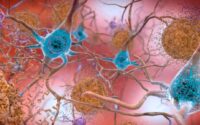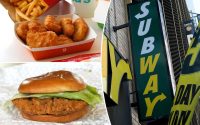Research reveals strangest pregnancy food cravings
A new survey reveals the weirdest pregnancy cravings that mothers experience, such as “pickles and cheese,” “sardines and ketchup,” and “peanut butter and marshmallow sandwiches, but with five bread layers.”
Out of 2,000 women who’ve given birth within the last six years, nine out of 10 (89%) have experienced at least one type of food craving during a pregnancy.
Most popular on the list: Seasonal foods, such as pumpkin pie, that happen to be out-of-season at the time the cravings happen (47%).
Another 42% wanted an unusual combination of food, and one in three (35%) wanted a specific food that they could only get at one place.
Conducted by OnePoll on behalf of Vitamin Angels, a public health nonprofit organization working to improve maternal and child nutrition worldwide, the survey also found that by the end of the first trimester, half of all respondents (50%) had started eating more nutritious foods and taking a prenatal vitamin (68%) to support their baby’s health.

89% of moms changed their health habits to support their pregnancy, with 38% starting in the first trimester.
In addition to eating more nutritious foods, they also began performing prenatal exercises (51%), drinking more fluids (38%) and sleeping more each night (36%).

And before their pregnancy even began, roughly one in 10 women (11%) had already started picking out names, and only one in four (25%) had started taking prenatal vitamins.
“During pregnancy, the daily required intake of several key vitamins and minerals can increase by as much as 50% and often cannot be met through diet alone,” said Dr. Colleen Delaney, Vitamin Angels technical director for US programs. “It’s recommended to take a prenatal vitamin as early as 3 months prior to conception in order to ensure optimal maternal health and pregnancy outcomes.”
In addition to sharing how their health habits changed during pregnancy, respondents also shared how they bonded with their baby during that time.

Common ways women connected with their baby during pregnancy included singing to them (56%), talking to them (55%), and reading them a book (49%).
When it came to practicing self-care during pregnancy, respondents participated in prenatal exercise (50%), got a prenatal massage (49%), took naps (48%), and ate nutritious foods (46%).
“Self-care is such an important component for overall pregnancy health—including prioritizing nutrition,” Delaney said. “Taking a daily prenatal vitamin is a great way to meet the increased nutrient demands of pregnancy and to support healthy outcomes for both mom and baby.”

MOST POPULAR KINDS OF PREGNANCY CRAVINGS
- A seasonal food that was out of season at the time (e.g. Pumpkin pie) — 47%
- An unusual combination of foods (e.g. peanut butter and pickles) — 42%
- A specific food I could only get at one place — 35%
- Junk food (e.g. potato chips) — 33%
- Whole, natural foods (e.g. bananas) — 33%
- Salty foods — 30%
- Sweet foods — 30%
- Food I didn’t normally like eating — 30%


